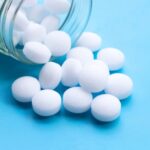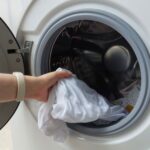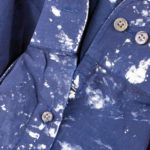White spirit is super useful. It’s the painter’s pal and the machinist’s mate. But it’s not always easy to see the back of.
Not only does it have a full-on all-pervading whiff (a nose assault a bit like that of paraffin), it’s on the list of things you shouldn’t pour down the sink.
The fact that it’s ultra-flammable (with a flash point similar to rocket fuel) doesn’t make things any easier.
The problem is that you can end up being a bit stuck with it, with jars full of old white spirit with paintbrushes languishing in them a common sight all over the sheds of the world.
When a jar gets tipped and you get stuck with it on your clothes, you might think that’s it—game over, your clothes will smell of white spirit forever. However, you’d be quite wrong.
It’s surprisingly easy to get rid of that white spirit smell, as we’re about to find out.
Let It Evaporate
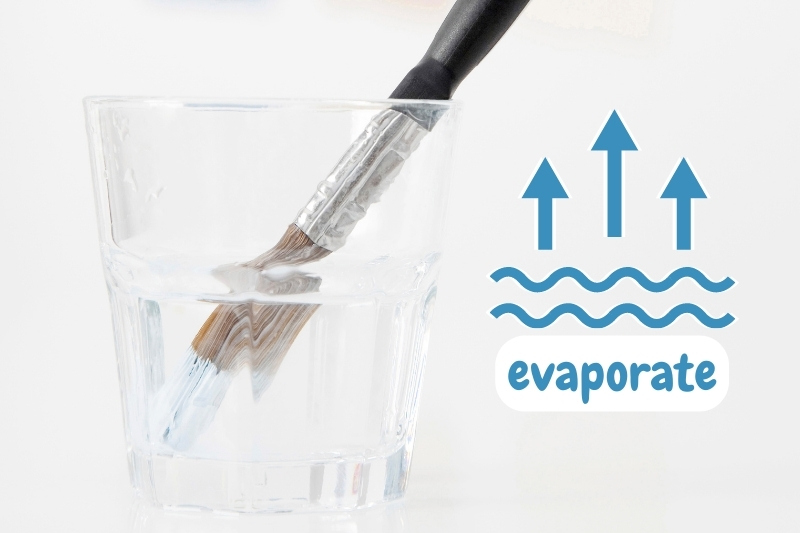
The great thing about white spirit, apart from what it brings to the painting party, is that it will break down very readily in the air.
If you’ve spilled some on a garment, just leave it to dry. If you can do it outdoors, so much the better.
The white spirit will dry off, taking the noxious odour with it, within half an hour or so. That’s that. Didn’t expect it to be so easy, did you?
Do note that this technique will only do the trick for you if it’s unadulterated white spirit that you’ve given yourself a dabbing with. If there are blobs of paint in there, then you’ll need to take remedial steps. See below for some tips.
There’s also the situation wherein Polly the peripatetic painter has put down her brush for the day and is ready for a well-deserved quick one down the local.
She takes off her overalls and, while she’s cleaning her brushes, she’s lost in reverie, deciding what she’s going to order at the bar. The inevitable happens, and she gets a big splash of white spirit right down her front.
What to do? She can’t hang about waiting for her blouse to dry – she’s got a bunch of mates down the pub waiting for her. Besides, she’s at a customer’s house, and they might look askance at any blouse removal procedure.
What’s needed here is a technique for dealing with garments in a quick and easy fashion, that doesn’t involve anybody being topless for any length of time. Let’s see what we can do.
Bicarbonate of Soda (Baking Soda)
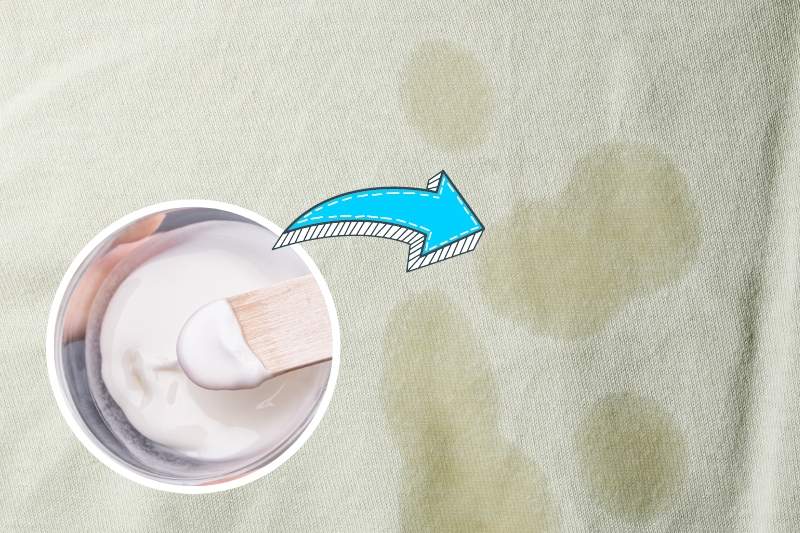
Our friend bicarbonate of soda will step up and do its thing in its usual helpful manner. Apply bicarb paste to the patch of white spirit and it will neutralise the smell instantly. Leave on for a few minutes, then wipe off the excess.
With white spirit being clear and bicarb being white, this approach works best with white garments, but you can get away with it with coloured clothes to—just be sure to rub off the excess bicarb. Ok, there’ll be a little residue left, but miracles are the preserve of the messiah. I’m just the mess sire.
Anyway, when you get back, put that garment in the sink with some washing-up liquid. This will help emulsify the white spirit, so that it comes away in the water.
Now you just need to get rid of the water. No, you can’t pour it down the sink or the toilet, as it’s highly toxic and should never be allowed to enter the biosphere.
Don’t worry though. Pour into a secure vessel and call your local waste disposal services. They should be able to advise on what to do.
Those tempted to pop the offending item in the washing machine shouldn’t for two reasons. Firstly, the white spirit will be issued into the drains with the waste water and will pollute as a result.
Secondly, you’ll end up with a washing machine that smells worse than your garment did (and probably still will). This is because there’s no ventilation in there, so the white spirit can’t safely evaporate.
So, if you’ve done a very daft thing and put a white spirit-infused item of clothing in the washing machine and there’s now a serious stink in there, then your best bet is to put the empty washing machine on its hottest setting and add two cups of vinegar or lemon juice.
That should take care of things. Make a note not to do it again and move on. To the washing line where you can hang your garment out to recover from its spirited ordeal.
What to Do About Paint

If you’re working with white spirit, the chances are you’re using oil-based paints. After all, emulsion paints can be cleaned up with hot water, so no need for white spirit at all. If you are using oil-based paints, you may be lining up a headache for yourself, as gloss paint spillages on fabric can be tricky to deal with.
Quite often, the best thing to do is to scrape away the excess then apply some of our old chum white spirit to the patch, and dab on the reverse side of the garment until the paint shifts. And now you know what to do to get rid of the remaining white spirit. Yes, line dry.
To be on the safe side, though, you should read the back of the paint tin to see what’s advised there. The right solvent for the job should be listed, so you stand the best chance of getting the paint out without damaging your clothing.
Of course, the picture is clouded somewhat by the exact requirements of the fabric in the garment or furniture. So, best to wear overalls that you don’t mind getting a bit messy, and keep them on, even while washing the brushes.
Even better is to read all pertinent care instructions before you start, and have the right solvent ready for action. Just in case.
What Harm Can White Spirit Do?
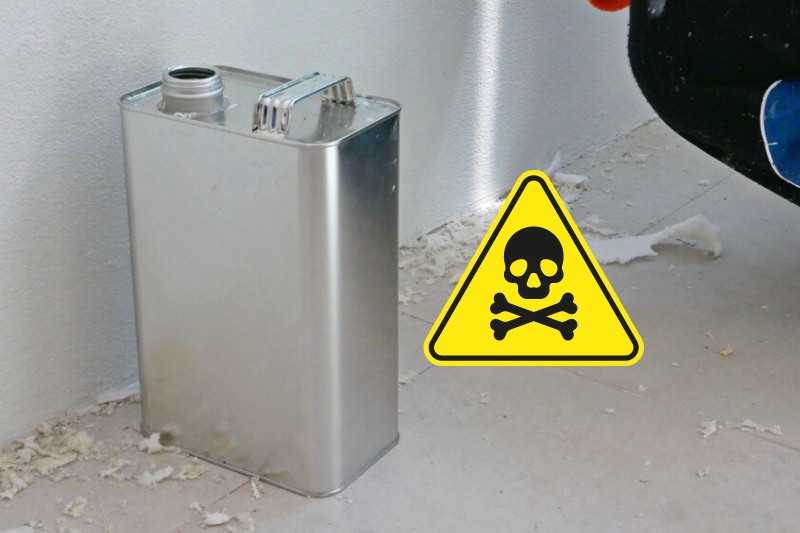
It’s important to know just how harmful white spirit can be, so we should end on a few warning notes, just so you know what you’re dealing with.
White spirit is a mix of hydrocarbons, and is known by a number of different pseudonyms, such as turps substitute and paint thinner. It’s used in the manufacture and application of paints, as well as a lubricant in various industrial processes.
Inhalation can be very harmful, leading to irritation of the mouth, nostrils and throat. It can sometimes give rise to the lung condition pneumonitis. More commonly, inhalation leads to shortness of breath, dizziness, stomach upset and headaches.
Get some on your skin for any length of time and you may get symptoms of dermatitis, so cracking and irritation all over the affected area. As you’ll probably by now be unsurprised to read, get any in your eyes and you risk severe burning and impairment of vision.
Should you be unlucky enough to ingest some, you can expect severe nausea and stomach pain.
So, now we know just how harmful this stuff is (and we haven’t even started on its seriously scary flammability), it becomes clear why we shouldn’t be leaking into the water supply. And it also becomes clear that we should be wearing PPE when dealing with it.
Replacing White Spirit

The truth is, we should be getting to a stage where we don’t need white spirit at all. Not only is it a hydrocarbon, which we should all be weaning ourselves off, but the need for it is diminishing.
This is because more and more quality eggshell and gloss paints are no longer dependent on oil for their resilience and waterproofing. They can even perform better: water-based gloss paints aren’t prone to yellowing over time like their oil-based counterparts.
So, hopefully, white spirit is on its way out. It’s a nasty substance so we shouldn’t mourn its passing. And in the meantime, while it’s still here in any form, now we know how to get rid of it, and its smell. That should restore your spirits.

Martin’s life revolves around films, dogs and food, but rarely all at the same time. At least two out of these three like to give clothes and furniture a hard time, and Martin enjoys discovering and writing about new ways to stop them doing their worst.


